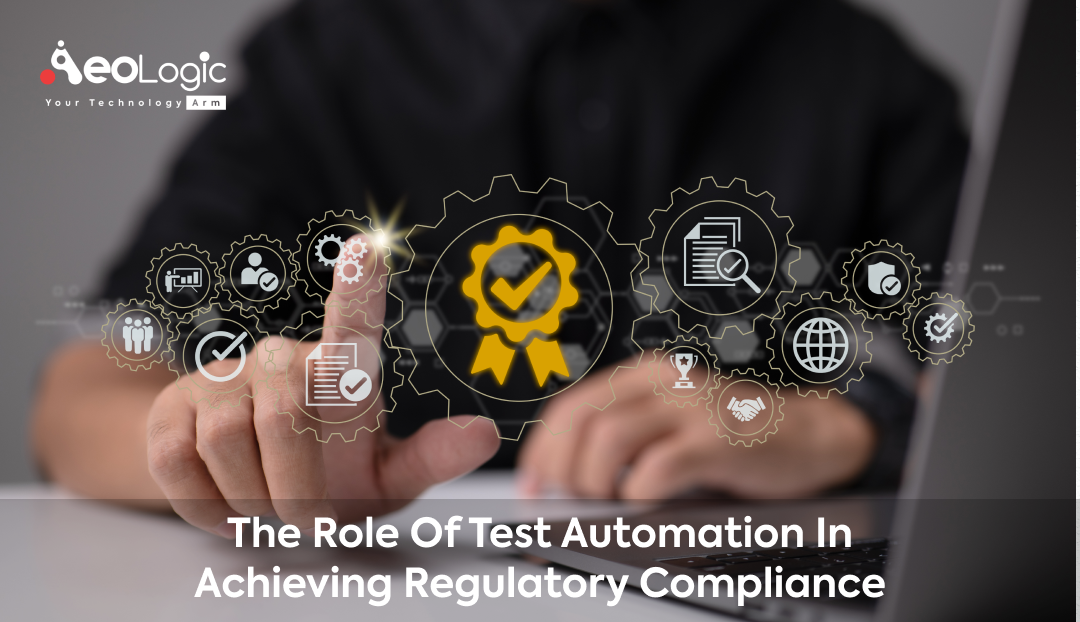In software development, we’ve witnessed a significant shift towards a more regulation-centric approach, particularly in industries like healthcare, finance, and e-commerce. With this shift comes a paramount question: How do we ensure that our software products not only meet the functional requirements but also adhere to the stringent regulatory standards?
As businesses and organizations navigate the complex web of industry-specific regulations, the need for efficient, accurate, and reliable testing methods becomes paramount. In this article, we’ll explore how test automation not only simplifies compliance but also becomes a cornerstone in maintaining it.
Understanding the Complex Landscape of Regulatory Compliance
Firstly, let’s demystify the complexity surrounding regulatory compliance in the software industry. Imagine a world where software applications are free to operate without any checks and balances. Chaos, right? To prevent this, various regulatory frameworks and standards are put in place. Here are a few prominent ones:
- HIPAA: A must for healthcare applications, focusing on the security and privacy of health data.
- PCI DSS: Essential for finance and e-commerce platforms, this standard safeguards sensitive payment card information.
- GDPR: A comprehensive data protection law affecting any software handling EU residents’ personal data.
- NDPR: Nigeria’s stance on data protection, similar in vein to GDPR.
- ISO 27001: This standard encompasses a broad spectrum of information security management systems.
- FDA 21 CFR Part 11: Specific to pharmaceutical and medical device industries, ensuring software adheres to FDA guidelines.
- Accessibility Standards: Guidelines like the WCAG ensure software is accessible to individuals with disabilities.
Navigating through these regulations can be a herculean task for development and QA teams. Manual testing, while valuable, might fall short in covering the exhaustive and intricate requirements of these standards. This is where test automation enters the scene.
Also Read: Boost Your Business With Factory Automation Solutions
The Challenge of Manual Testing
Traditionally, businesses have relied on manual testing to ensure compliance. This approach, while straightforward, has significant drawbacks. Manual testing is time-consuming, prone to human error, and often becomes a bottleneck in the development process. As regulations change and update frequently, keeping up manually becomes an almost Herculean task.
The Essential Role of Test Automation in Compliance
This is where test automation comes into play. Test automation involves using software tools to execute pre-scripted tests on a software application before it is released into production. It’s faster, more reliable, and can be run repeatedly with minimal additional cost.
1. Efficiency and Accuracy
The most immediate benefit of test automation in the context of regulatory compliance is its efficiency and accuracy. Automated tests can be run quickly and repeatedly, ensuring that any compliance-related features of the application are consistently checked against the required standards. This speed and precision are vital when you’re dealing with complex regulations that can have serious consequences if not followed correctly.
2. Keeping Up with Regulatory Changes
Regulations are not static; they evolve. An automated testing framework can be updated to adapt to new regulations much faster than manual methods. This agility ensures that businesses can quickly become compliant with new regulations, reducing the risk of penalties or legal issues.
3. Comprehensive Coverage
Automated testing can cover a wider range of scenarios and use cases than manual testing. This comprehensive coverage is crucial in ensuring that all aspects of a product or service comply with regulatory standards.
4. Documentation and Reporting
Automated tests produce logs and reports that can be used as evidence of compliance. This documentation is crucial during audits or inspections, as it provides a clear, detailed record of compliance efforts.
5. Continuous Compliance
In the world of continuous integration and deployment, automated testing ensures continuous compliance. As new features are added or changes are made, automated tests can be run to ensure that these updates adhere to regulatory standards.
6. Documentation and Reporting
One of the key benefits of test automation is its ability to generate detailed logs and reports. These documents are crucial during compliance audits, offering clear evidence of compliance.
7. Comprehensive Test Coverage
Automated tests can rigorously and efficiently cover a multitude of scenarios, including those edge cases that are critical for meeting regulatory standards.
Also Read: How Automation is Transforming Manufacturing in India
Implementing Test Automation for Regulatory Compliance
Implementing test automation for regulatory compliance can be a game-changer for any organization aiming to ensure its software products meet industry standards and legal requirements. Let’s break down this implementation into detailed steps, using interactive language and a format that includes headings and subheadings for better understanding.
1. Identifying the Relevant Regulations
Before we dive into the world of test automation, you must understand the specific regulations applicable to your software. Think of this as setting the GPS before a journey. Regulations can vary widely depending on your industry – whether it’s healthcare, finance, or e-commerce. For instance, if you’re in healthcare, HIPAA might be your guiding star, while GDPR will be a priority for software dealing with European users’ data.
2. Crafting Compliance-focused Test Cases
Once we’ve identified our regulatory ‘north stars’, the next step is to develop test cases that align with these requirements. This involves a meticulous process where you will craft scenarios that specifically test for compliance in areas like data security, user privacy, and accessibility. It’s like creating a custom-made suit – it needs to fit your software’s compliance needs perfectly.
3. Choosing the Right Automation Tools
This step is about picking the right tools for the job. Your choice of test automation tools should align with your software’s technology stack and the specific compliance requirements you’re aiming to meet. Tools like Selenium, Jenkins, or TestComplete might come into play here. It’s akin to choosing the right ingredients for a recipe – the better the match, the better the outcome.
4. Integrating into the CI/CD Pipeline
Embedding test automation into your Continuous Integration and Continuous Deployment (CI/CD) pipeline is like setting up a 24/7 security system. It ensures that with every code update or new feature addition, your compliance tests are automatically run. This step is crucial for maintaining continuous compliance and catching any potential non-compliance issues early in the development cycle.
5. Regular Reviews and Updates
Regulations are not static; they evolve. Therefore, it’s imperative to keep your test cases up-to-date with these changes. Regularly review and update your test scenarios to adapt to new or amended regulations. This is akin to keeping your maps updated in a rapidly changing cityscape.
6. Maintaining Detailed Documentation
Finally, meticulous documentation of your compliance testing process is key. This includes records of test execution, results, and any actions taken to address non-compliance issues. Think of this as keeping a detailed travel log. Such documentation is not just beneficial for internal tracking; it’s also crucial during audits or regulatory reviews.
Boost your business performance with our automation solutions!
Final Words: Role of Test Automation in Compliance
The role of test automation in achieving regulatory compliance is both significant and multifaceted. By embracing automation, organizations can ensure that they not only meet the current regulatory standards but are also well-prepared for future changes. The key is to balance automation with manual testing, ensuring comprehensive coverage and ongoing adherence to regulatory requirements.
As the regulatory landscape evolves, test automation will undoubtedly play an increasingly critical role in helping businesses navigate these changes efficiently and effectively, ensuring that they continue to operate with integrity and trust.

I’m Deepika Pandey, an SEO strategist and content writer with 6+ years of experience. I create SEO-friendly content that drives traffic and engages readers. I combine data insights with creativity to help businesses grow their online presence effectively.






